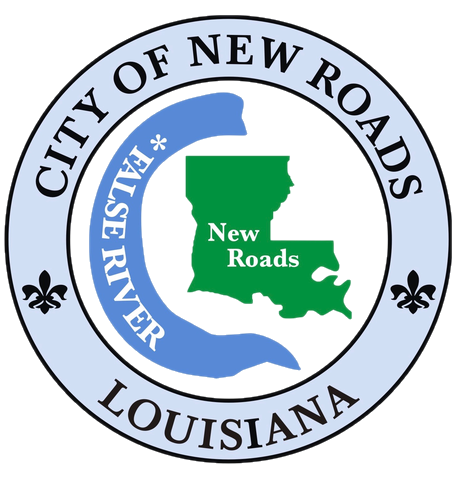HISTORY
Step off the beaten path, and re-enter the world of 19th century Creole Louisiana in New Roads, Louisiana, where relaxation is the rule, and history and tradition are abundant.
The first settlement in New Roads can be traced back to 1822. A six-block settlement was established at the terminus of a “new road” linking the False River & Mississippi River settlements.
New Roads’ success was guaranteed in 1847 when it was named governmental seat of Pointe Coupee Parish. At the turn of the century, New Roads became a resort community as seasonal tourists began making the pilgrimage to enjoy the tranquil waters of False River.
Le Poste de Pointe Coupée (“The Pointe Coupee Post”) is one of the oldest communities in the Mississippi Valley. The post was founded in the 1720s by settlers from France. The post was located upstream from the point crossed by the explorers, immediately above but not circled by False River. The name was linked to the area along the Mississippi northeast of what is now New Roads. The post was settled by French coming from France and French Creoles as well as Africans coming from the French West Indies (Guadeloupe, Martinique and Santo Domingo, the west part of Hispaniola -Saint Domingue in French), later by French coming from Paris (like the family Provost) via Fort de Chartres, Illinois.
In 1768-1769, fifteen French families (among others, the families Provost and Nezat, Pierre Nezat coming from Layrac, France) left the Pointe Coupee Post and settled in the Attakapas Post (today St Martinville, LA). The post was later settled by African-Americans, Anglo-Saxons and Italians.
About 1776, a Chemin Neuf, French for “New Road”, was built connecting the Mississippi River with False River, a 22-mile (35 km) long oxbow lake and formerly the main channel of the Mississippi. The post became New Roads. In 1822, streets were opened and lots created at the False River terminus of the new road. Since its founding, New Roads has been the hub of an agricultural community, focused on the production of sugar cane, cotton, pecans and other crops. Today, the economy is enhanced by industries, retail establishments, restaurants and lodging enterprises, five banks and modern health care and nursing facilities.
On January 31, 1865, toward the end of the American Civil War, five squadrons of Union cavalry marched into New Roads in a blinding rainstorm. Here five Confederate officers under the command of Colonel John S. Scott were discovered hiding in closets, under houses, and in a hole. Scott, who operated around Morganza, obtained many of his supplies from the Union forces in control of Baton Rouge, who exchanged food, clothing, and other necessities for cotton smuggled by Scott’s men.[3]
Commandants of Pointe Coupee (1729-1762)
Notable people
From 1949 until his death in 1981, New Roads was the home of Emmitt Douglas, who served as president of the Louisiana NAACP from 1966-1981.
Julien de Lallande Poydras, a merchant, planter, poet, statesman, banker, and philanthropist helped to establish the state’s first public schools in Pointe Coupee Parish in the early 19th century. He likewise endowed a trust fund to provide impoverished brides with dowries in Pointe Coupee and West Baton Rouge Parishes. Visitors will find his grave on the grounds of the old Poydras School on Main Street in New Roads, now a museum and cultural center established by the Pointe Coupee Historical Society.
James Ryder Randall, an English professor who wrote the poem “Maryland, My Maryland” in April 1861, at nearby Poydras College on False River. The poem was later put to music. The site is still known as Randall Oak, though the school was destroyed by fire in 1881. The poem is now Maryland’s official state song.
Lieutenant General John Archer LeJeune of the United States Marines.
Ernest J. Gaines, African fiction writer, writer-in-residence at the University of Louisiana at Lafayette;
U.S. Ambassador to the Vatican Marie Corinne Morrison Claiborne Boggs, known as Lindy Boggs;
Former New Orleans Mayor DeLesseps Story Morrison and his half-brother Jacob Haight Morrison were born in New Roads.
In 1978 Trina Olinde Scott became New Roads’ first female mayor. She was followed by Sylvester Muckelroy, the first African-American mayor. The current mayor is Theron Smith.
Geography
New Roads is located at 30°41′47″N 91°26′20″W30.69639°N 91.43889°W (30.696305, -91.438980)[4] and has an elevation of 30 feet (9.1 m)[5]
According to the United States Census Bureau, the city has a total area of 4.6 square miles (11.8 km²), all of it land.
Gradually sloping from a high of 36 feet (11 m) above sea level on Main Street immediately adjacent to False River to a low of 25 feet (7.6 m) along Portage Canal in the north, the city lies on a Mississippi River flood-plain but has never flooded to any great extent since 1912. Levee breaks or “crevasses” on the Mississippi River to the north and east overbanked False River and submerged all of New Roads in 1867, 1882 and 1884. The 1882 flood was the most severe, with four feet on water standing in Main Street during the height of the crises. During the floods of 1912 and 1927, however, the southern portion of the town, including the main business district, remained dry, as the flood waters to the north and east were held back by the Texas & Pacific Railroad embankment.




